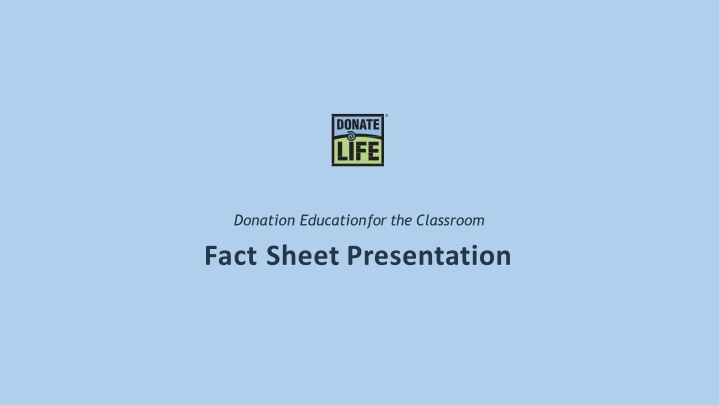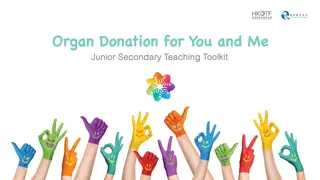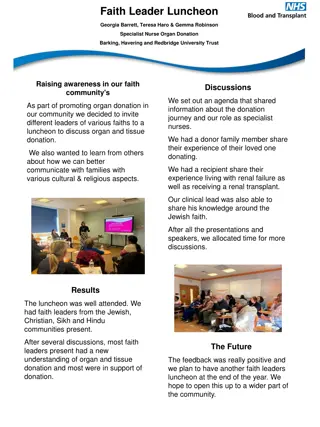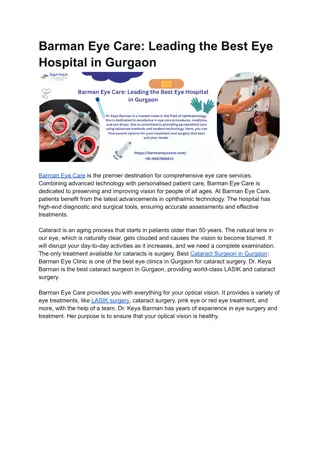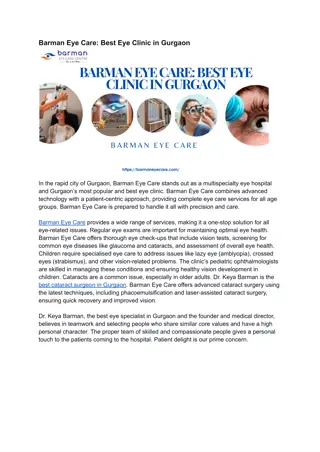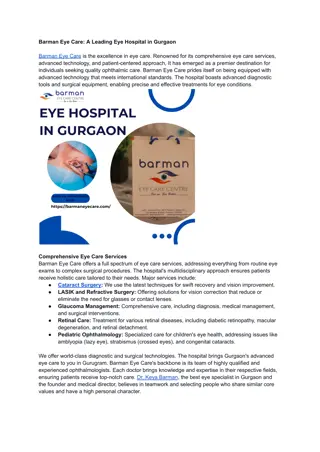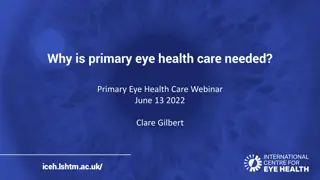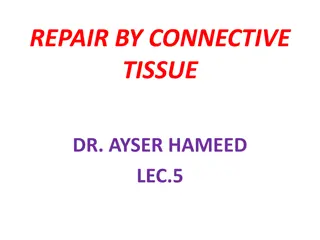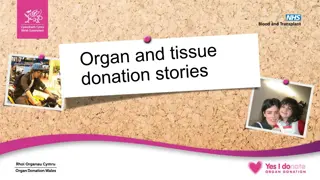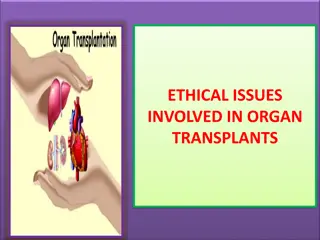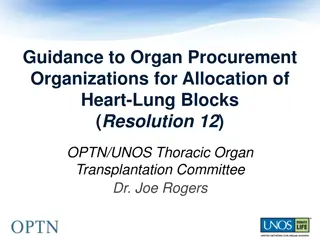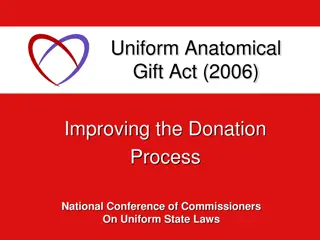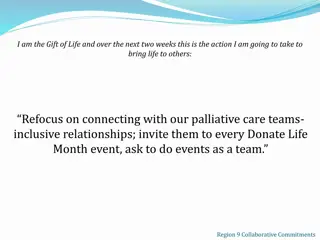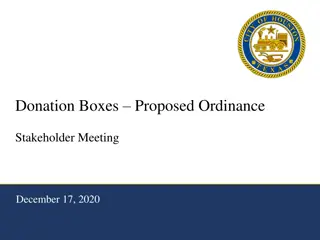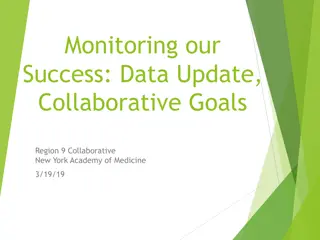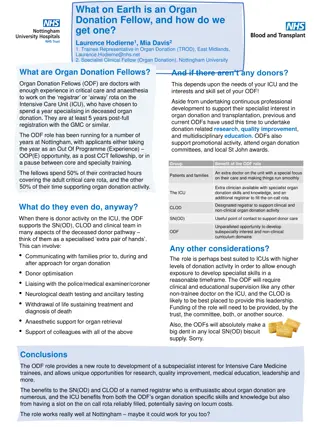Organ, Eye, and Tissue Donation: Facts and Education for the Classroom
Explore essential information on organ, eye, and tissue donation, including common questions, the impact of donation, and how to register as a donor. Learn about the waiting list for transplants, the significance of eye donation, and the process of becoming a donor to save lives. This fact sheet presentation aims to educate and raise awareness about the importance of donation decisions.
Download Presentation

Please find below an Image/Link to download the presentation.
The content on the website is provided AS IS for your information and personal use only. It may not be sold, licensed, or shared on other websites without obtaining consent from the author.If you encounter any issues during the download, it is possible that the publisher has removed the file from their server.
You are allowed to download the files provided on this website for personal or commercial use, subject to the condition that they are used lawfully. All files are the property of their respective owners.
The content on the website is provided AS IS for your information and personal use only. It may not be sold, licensed, or shared on other websites without obtaining consent from the author.
E N D
Presentation Transcript
Donation Educationfor the Classroom Fact Sheet Presentation DONATION EDUCATION FOR THE CLASSROOM | FACT SHEET PRESENTATION 1
Donation Educationfor the Classroom When it comes to organ, eye and tissue donation there are many commonly askedquestions.Findthefactsandgettheanswersbelow! Common Questions Who can register todonate? Every individual has the right to sign up to donate their organs, eyes and tissues at the time of their death. Anyone canregister.Yourageisnota factor.Infact,theoldestorgan donor was95! What if I don t document my decision? If you don t decide prior to your death whether or not you want tobecomean organ,eye and tissuedonor, your loved oneswill have theopportunitytomakethatdecision on your behalf. Therefore, it is incredibly important to documentand shareyour decisionwith yourloved ones. What does joining the Donor Registrymean? When you register as an organ, eye and tissue donor you aremakinga legaldecision*thatwill behonoredafteryour death.It simportanttotalk with yourfamily sotheycan be awareand prepared to honor your decision. What if my family wants an opencasket? Organ, eye and tissue donors are heroes and are treated as such. The medical professionals who perform the recovery surgeries treat donors with the utmost respect, just likethey would for any other patient. If you and your family were planning on an open casket funeral or viewing, these plans should not be affected by donation. * Legal decision for individuals 18 andup What if my family doesn t agree? Donor Designation is a legal and binding decision for ages 18and over.Legalguardiansand parentsofminorshave the righttorefusedonationevenif a personundertheageof18 is a registereddonor. DONATION EDUCATION FOR THE CLASSROOM | FACT SHEET PRESENTATION 2
Donation Educationfor the Classroom When it comes to organ, eye and tissue donation there are many commonly askedquestions.Findthefactsandgettheanswersbelow! Common Questions How many people are waiting fora transplant in the U.S.? Nationwide, there are over 100,000people waiting for a life- saving organtransplant and morethan 3,000of thosepeople are right here inMinnesota. How does the waiting listwork? When it comes to waiting for an organ transplant, we are all createdequal.Wealthyorfamous individuals cannotand donot get preference on the national transplant waiting list. Factors such as blood type, body size, location, severity of illness and lengthoftimeonthewaiting list areusedtodeterminethebest candidate for anorgan. How many people can a singledonor help heal andsave? Onepersoncansave andheal morethan75lives throughorgan, eye and tissue donation. In some cases, tissue donation can increase this number significantly. Waiting list factorsinclude: Bloodtype Bodysize Severity of patient s medicalcondition Distancebetweenthedonor shospitalandthe patient shospital The patient s waitingtime How do I register as adonor? Youcanregisterasa donoronline at DonateLifeMidwest.org, bymail, at theDMV when yougetyour permitordriverslicense, oreventhroughtheiPhoneHealthapp. Whetherthepatientishealthyenoughforsurgery DONATION EDUCATION FOR THE CLASSROOM | FACT SHEET PRESENTATION 3
Donation Educationfor the Classroom Did you know that eye donation is actually the most common of all donations?Readbelowtolearn moreabouttheincrediblegiftofsight! Eye Donation Who can become an eyedonor? Yourhealthhistorymay notprevent eye donation.Peopleofall medical histories should consider themselves as potential eye donors. Those with LASIK surgery, poor eyesight, chronic illness and mostcancerscan stillbepotentialeye donors. Cornea Sclera Which parts of the eye can bedonated? CORNEA Thecornea istheclear,dome likewindow covering thefrontoftheeye thatallows thelight topassthroughtothe retina, and enables us to see. A corneal transplant is a surgical procedurethatreplaces partofa person scorneawith corneal tissue from a donor. Cornea donation is necessary for the preservation and restoration ofsight. SCLERA While thecorneaistheonlypartoftheeye regularly transplanted, the sclera (white of the eye) can also be used in somesurgeriestorepairdiseaseortrauma totheeye. Eye EYE Theentireeye canbeusedforeducationand medicalresearch. DONATION EDUCATION FOR THE CLASSROOM | FACT SHEET PRESENTATION 4
Donation Educationfor the Classroom Did you know that eye donation is actually the most common of all donations?Readbelowtolearn moreabouttheincrediblegiftofsight! Eye Donation Eye Donation by theNumbers 8 Thescleracanbedivided intoeightpartsand usedtorepair disease or trauma to theeye. 2,000,000 Since 1961,over 2millionpeoplehave had theireyesight restored through cornealtransplants. 80,000 More than 80,000 people worldwide receive cornealtransplants eachyear. 7 Every sevenminutessomeonereceivesa corneal transplant. 2 One person s corneas can be transplanted into two different people. 70,000 Over 70,000 people donate their eyes eachyear. 10 Oneeye donoralonecan helpheal upto10people through the cornea andsclera. DONATION EDUCATION FOR THE CLASSROOM | FACT SHEET PRESENTATION 5
Donation Educationfor the Classroom Thereare many common misconceptionsaboutorgan, eyeandtissue donation.Readbelowtogetthefactsandsettherecordstraight! Myths vs. Facts Myth: I m too old to be a donor. Fact: People of all ages and medical histories should consider themselves as potential donors. Your medical condition at the time of passing will determine what organsandtissuecan be donated. Most healthconditions donot prevent donation, andage isnot a factor. In fact,theoldest organ donor ever was 95,andtheoldest eye donor inMinnesota was 107! 95 Myth:I m not healthy enough to be a donor. Fact: Even with an illness or a health condition,you may be able to donate your organs andtissueupondeath.At the time ofdeath,doctors determine whether youare medically suitable for donation,and there are only a few conditions that would absolutely prevent a person frombecoming a donor suchasactivecancer or a systemic infection. Even people with diabetes,HIV, hepatitisandcancer CANsometimes donatetheir organs. Myth:Donation is against my religion. Fact:All major religions intheUnitedStatessupport donation andconsider it tobe a generous andcompassionate act ofcaring. Donation organizations coordinate with families andhospitalstomake suredonors beliefs, practices andceremonies are always respected. DONATION EDUCATION FOR THE CLASSROOM | FACT SHEET PRESENTATION 6
Donation Educationfor the Classroom Thereare many common misconceptionsaboutorgan, eyeandtissue donation.Readbelowtogetthefactsandsettherecordstraight! Facts vs. Myths Myth: Organs are matched by race and ethnicity. Fact:Although organs are not matched by race and ethnicity, and people of different races frequently match one another, all individuals waiting for an organ transplant will have a better chance of receiving one if there are large numbers of donors from their racial or ethnic background. This is because compatible blood types and tissue markers critical qualities for donor and recipient matching are more likely to be found among members of the same ethnicity. A greater diversity of donors may potentially increase access to transplantation for everyone. Myth: Donation is expensive. Fact:When it comes todonation, thereisnocost toyour family or loved ones. If you decide tobe an organ,eye andtissuedonor, themedical expenses associated with thedonation will be covered. Myth: If I m a registered donor, they won t try as hard to save my life. Fact:If you are taken to the hospital after an accident or injury, it is the hospital s number one priority to save YOUR life. Your status as a donor is not considered until every effort has been made to try to save your life. To be considered for organ donation, a patient must be on a ventilator and either declared brain dead or suffer cardiac death. DONATION EDUCATION FOR THE CLASSROOM | FACT SHEET PRESENTATION 7
Donation Educationfor the Classroom Organ donation is a selfless decision to share the gift of life. Readbelowtolearn moreaboutthisincrediblelife-savingprocess! Organ Donation What parts of the body can bedonated? Heart Pancreas Kidneys(2) Lungs (2) Liver Intestines Living vs. Deceased Donation Many formsofdonation takeplace aftera donorpassesaway, butsomeorganscan besharedbyliving donors.Deceaseddonationsinclude: kidneys, liver,lungs,heart,pancreas and intestines.Living donationsinclude:one kidneyorpartoftheliver,lung, intestineorpancreas. DONATION EDUCATION FOR THE CLASSROOM | FACT SHEET PRESENTATION 8
Donation Educationfor the Classroom Organ donation is a selfless decision to share the gift of life. Readbelowtolearn moreaboutthisincrediblelife-savingprocess! Organ Donation Organ Donation by theNumbers 17 Every day17peoplepassaway while waitingfor a transplantmatch. 100,000 In the U.S., over 100,000 people are waitingfor life-saving organtransplants. 10,000 Every year, roughly 10,000 people end up becomingdonors in theU.S. 9 Every9minutesa newpersonisinneedofa transplant. 8 Onedonorcan save upto8lives throughorgandonation. 3,000 IntheupperMidwest,morethan3,000peopleareinneed of life-saving transplants. 1 Althoughanyone canregister,only1% ofpeopleactually qualify tobecomean organdonorafterpassing. 48 The entire organ recovery process typicallytakes place in less than 48hours. DONATION EDUCATION FOR THE CLASSROOM | FACT SHEET PRESENTATION 9
Tissuedonationssaveanddramatically improve thequalityoflife for people who receive them. Read more below to learn more about the incredibly healing gift oftissue. Donation Educationfor the Classroom Tissue Donation What tissue can be donated? BONE TISSUE hip,legorribtissuefororthopedicand reconstructive treatments HEART VALVES to repair defective valves and improve heartfunction BLOOD VESSELS to restore blood flow; often used for heart bypass, to make continued kidney dialysis possible, tore-establishcirculation ina diabetic slimband torepairaneurysms SKIN TISSUE for burn patients, trauma, reconstruction and wound caretreatments CONNECTIVE TISSUE ligaments or tendons to increase or restoremobility How does tissue donationhelp? Bone, cartilage, veins,tendons, ligaments and heart valves can cover burns and stop infections, replace veins and mend damaged connective tissue and cartilage in recipients. For example, heart valves can save the lives of infants born with heart defects,and ligamentscanrepairtornACLs. DONATION EDUCATION FOR THE CLASSROOM | FACT SHEET PRESENTATION 10
Donation Educationfor the Classroom Tissuessaveanddramatically improve thequalityoflife forthepeoplewho receivethem.Readbelowtolearn moreaboutthisincrediblegiftofhealing! Tissue Donation Tissue Donation by theNumbers 24 Tissue donation must be initiated within 24hours of a person sdeath. 1,500,000 Close to 1.5 million people benefit from tissue donation each year. 58,000 Each year, approximately 58,000 tissue donorsprovide life-saving and healing tissue fortransplant. 5 Organs must be transplanted within hours of recovery, but tissue donations can be packaged and kept for up to five years. 75 Just onetissuedonorcansave and heal morethan75lives! DONATION EDUCATION FOR THE CLASSROOM | FACT SHEET PRESENTATION 11
